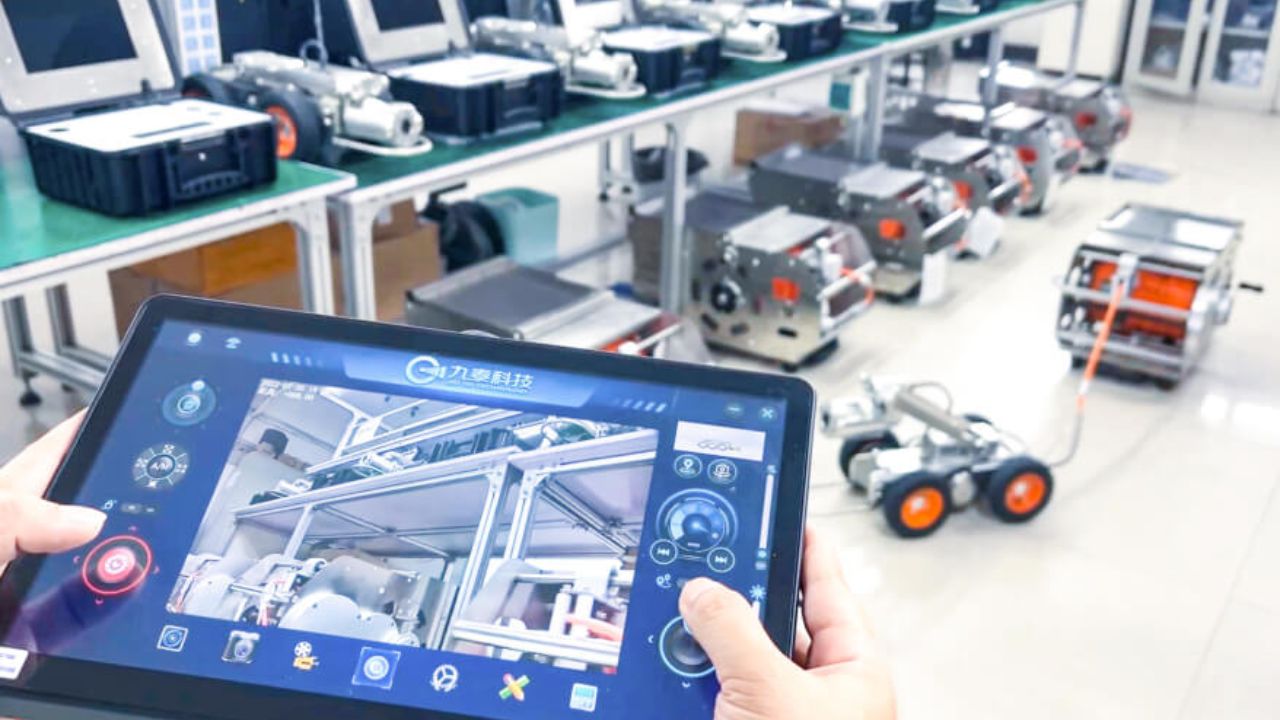As it can be seen, the new technologies have changed the way of inspection in the industrial maintenance and infrastructure management industries. Among such innovations that have been developed and which have had a great impact are the pipe inspection robots. They are rather sophisticated instruments that have changed the nature of the work by offering high levels of precision and work productivity. Zhengzhou JiuTai Technology Co. Ltd., a drain pipe inspection camera company is among the leading companies in pipe inspection robotics. This article is focused on pipe inspection robots and their role in industrial development.
The Evolution of Pipe Inspection Technology
Before, pipe inspections were tedious and destructive in a way that the pipes had to be disassembled. The traditional practices included keying data into small boxes, which was very dangerous to the employees, and many working hours were spent. However, it is possible to regard the application of pipe inspection robots as a revolution in the process of inspection. These robots are equipped with cameras of high resolution and other navigation aids to allow them to scan pipes and conduits without any danger.
New Trends in Pipe Inspection Robots
Advanced Imaging Technologies
The next advancement in pipe inspection robots is the integration of high-definition and 3D imaging systems. The conventional cameras provided only a planar perspective and this limited the inspector from getting a complete picture of the pipes’ condition. Modern robots use high-definition cameras and 3D scanning which enables them to capture the interior surface of pipes. This is useful in detecting faults, build-ups, and anything that may require attention.
Enhanced Mobility and Maneuverability
In the past, pipe inspection robots were restricted by the size and the maneuverability of the equipment that was employed. Some of the challenges were; traversing through pipes that were thin or had a cross-sectional area that was complicated. Recent improvements have been made to make the robots more versatile and with improved motion. Some of the characteristics include articulated tracks, flexible joints, and highly developed propulsion systems which enable these robots to move through pipe systems. This increased mobility enables the inspector to access areas that he or she could not access before and thus provide a better estimate of the condition of the pipes.
Automated Operation and Artificial Intelligence Integration
The other benefit of pipe inspection robotics is that it works on its own. Modern robots like those produced by JiuTai Technology are more independent and can perform inspections with minimal or no human interventions. These are AI and machine learning robots, which implies that they are capable of analyzing data in real-time, identifying issues, and possibly suggesting solutions. AI integration enhances the effectiveness of the inspections and reduces the chances of human errors, which results in better assessments and faster decisions.
Real-Time Data Transfer and Analysis
In modern pipe inspection robots, it is assumed that real-time data transfer is one of the critical components. Advanced communication technology allows the inspector to receive the live video stream and information from the robot and make decisions instantly. This capability is particularly important in emergency situations where fast actions are anticipated. Also, the real-time data transfer helps in reducing the time taken to inspect and correct the problems.
Improved Durability and Adaptability
Contemporary pipe inspection robots are designed for various conditions and are appropriate for various types of pipes and their diameter. New material and engineering have enhanced the robotic strength and their capacity to bear force, chemicals, and heat. This increased flexibility enables the robots to perform inspections in different sectors such as sewerage and oil pipeline systems.
Innovations and Their Impact on Industrial Solutions
The following innovations have enhanced the efficiency and effectiveness of inspections, leading to several key benefits:
Increased Safety
JiuTai pipe inspection robots are useful in a way that they assist the workers to save their time in dangerous or small spaces which is safety promoting. These safety precautions also assist in the reduction of the likelihood of accidents and injuries at the place of work.
Cost Savings
The fact that inspections can be carried out without much interference is an added advantage to businesses and this means that money is saved. This is because the problems that are detected early do not need costly remedies and the pipe systems will last longer, therefore, saving money in the long run.
Enhanced Accuracy
This means that the inspections are more accurate and reliable due to the application of imaging technologies and artificial intelligence analysis. This leads to improved decision-making processes as well as maintenance strategies and methods.
Operational Efficiency
Real-time data transfer and self-operations are beneficial to the inspection process because it is quicker and more efficient. This efficiency is useful in reducing operational interferences and ensuring that pipe systems are in the best condition.
Conclusion
The advancement in pipe inspection robotics has been a result of changes in imaging, mobility, autonomy, and data analysis. Some of the companies that have been involved in such developments include Zhengzhou JiuTai Technology Co. Ltd. which has led to the development of industrial solutions. As technology continues to improve, there will be better pipe inspection robots that will be more effective, safer, and precise in their industrial assessments. The future development of pipe inspection robotics will be even better and will bring more changes to the industry.


